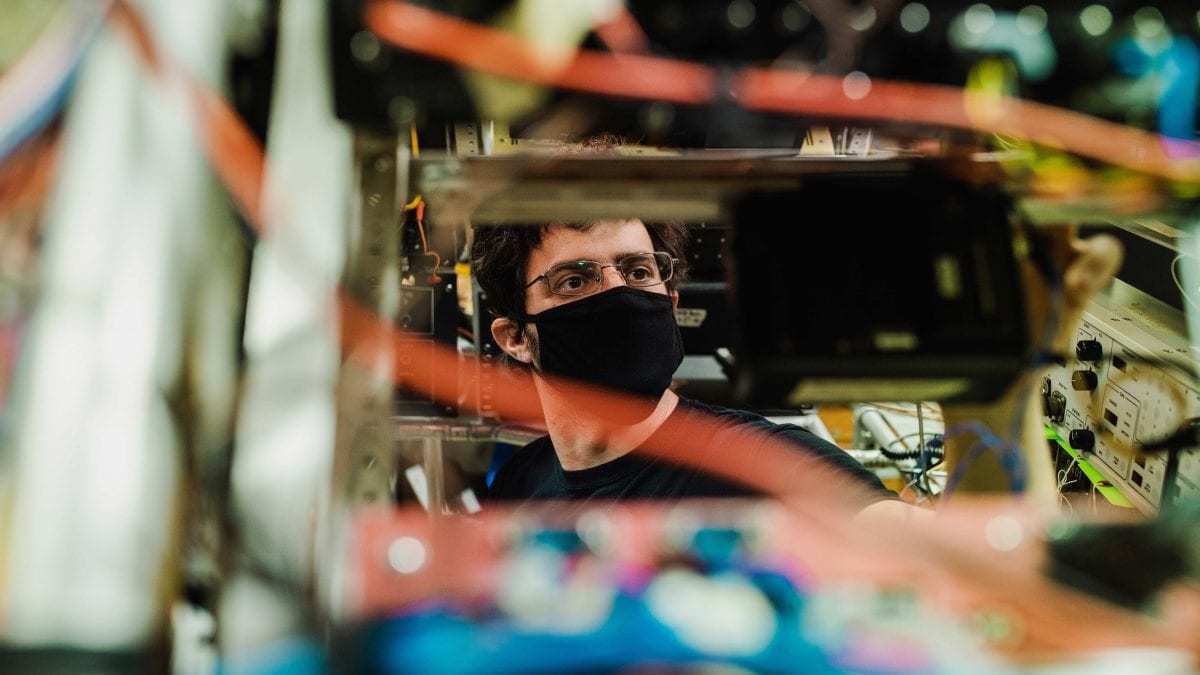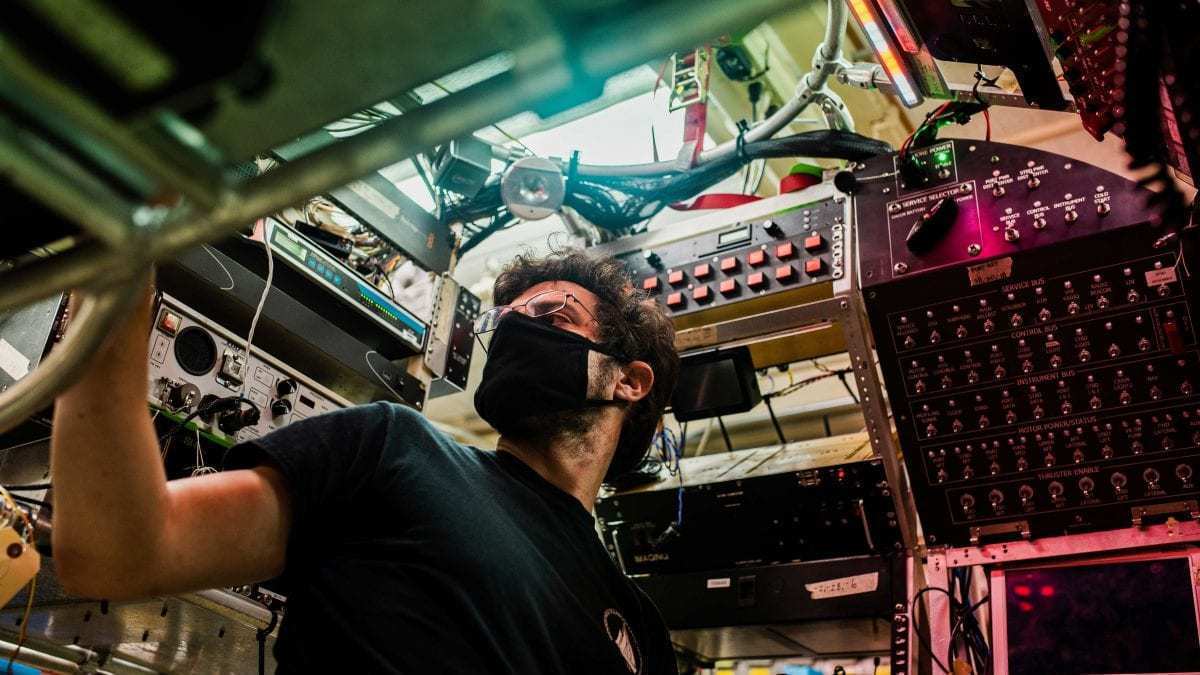Meet the Alvin 6500 Team: Drew Bewley
Meet the Alvin 6500 Team: Drew Bewley
Read this at WHOI

Drew Bewley is the electrical section leader of human occupied vehicle (HOV) Alvin’s at-sea operations crew and an Alvin pilot. When Alvin is at sea, his work includes overseeing the electrical shop that keeps the sub in smooth working condition and piloting the sub to accomplish as much science as possible in one dive. In port for the Alvin 6500-meter overhaul, Drew took some time to tell Oceanus more about his path to this position and his role in building the submersible of the future.
Oceanus: How did you find your way to WHOI and the Alvin Group?
Drew: I knew about Alvin as a third grader. There was a book from the school library that I checked out repeatedly about exploring the Titanic with Bob Ballard. It had a two-page spread about the sub with cutaway drawings of it.
I didn’t tell my parents that I wanted to work on Alvin when I grew up because even at that age, I recognized that there is only one Alvin and you could only fit three people inside. The notion that a kid from Kentucky would grow up to do that sort of a job seemed pretty far-fetched.
In college I changed majors from music to photo journalism, before pursuing electrical engineering. After I graduated and found a job, I took up SCUBA diving as a hobby and that rekindled my interest in the ocean. One night I was watching a PBS documentary and Ballard was using a remotely operated vehicle to look at a U-boat and I was like “I remember that guy!” After digging around on the internet, I ended up on the WHOI website, saw they actually had an opening for the Alvin Group, and sent off my resume.
Oceanus: What are you working on right now during the overhaul?
Drew: We’ve got the submarine disassembled and are working through normal maintenance items. In addition to that, I am working on some modifications to the power distribution center. It's what powers a large portion of the in-hull science equipment. It distributes power to the computers, camera gear, and support equipment inside the sub.
One of the things that I like about the Alvin Group is that in addition to being a pilot, I am able to be involved in the design and development of new systems for the sub and then I go to sea and actually use it. The guy who designs a space shuttle will probably never get to fly in one. It’s a unique opportunity that we are able to be engaged through the entire process.

Oceanus: What is it like seeing these underwater landscapes in person and trying to capture them on film?
Drew: Imagery is one of the most critical products we have from Alvin. You can’t get the entire science party into the sub and you're only down there for a short time, so still and video imagery are really important to share what you’ve done. But the defining feature about Alvin is that it actually puts the user in that environment. While cameras have vastly improved over the years, they still have limitations and can't replace the performance and perspective of the human eye. To be in the vehicle looking out the porthole and see it play out before you has an immediate impact and puts things in to context much more readily.
Oceanus: What advice do you have for kids who dream about working on Alvin when they grow up, like you did?
Drew: Technical skills and a strong curiosity are both important. I would especially encourage them to cultivate practical hands-on skills. I didn't go to school for submarines. Growing up, I would help my grandparents on the farm work on tractors. When I was in college, I worked as an auto mechanic and in a factory for a while. I built things and took things apart. Many students are good with theory and modeling and proofs, but if you can, find opportunities to do hands-on work. Experiment, make mistakes, and learn from them.
Human-occupied vehicle Alvin is in Woods Hole for the final phase of an overhaul that will enable the sub to travel 6,500 meters below the sea surface—more than 4 miles deep and 2,000 meters deeper than Alvin’s current maximum depth. Alvin is owned by the U.S. Navy, operated by the National Deep Submergence Facility at WHOI, and funded by the National Science Foundation, the Office of Naval Research, and the National Oceanic and Atmospheric Administration. Operations are coordinated through the University-National Oceanographic Laboratory System.